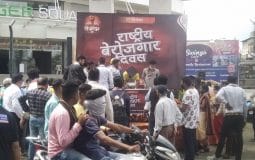The White Tiger is the latest attempt by Hollywood to look at Indian society.
Based on the original novel by Aravind Adiga, which won the Booker Prize in 2008, it tells the story of Balram, who comes from a poor Indian village and, through a combination of ambition, wit and cunning, manages to escape from poverty.
The film stars Adarah Gouray and Priyanka Chopra and was directed by Ramin Bahrani who also wrote the screenplay, and was nominated for an Oscar for it at the 93rd Academy Awards.
But does it represent India more accurately than any previous attempts by Hollywood, which has tended to either over glamourise the country, or, alternatively, to cast it in a poor light, emphasising the downtrodden and the huge disparities in wealth between the haves and the have nots?
Of course, India is not the only thing where the reality and the image differ.
Many people view online casinos with a mixture of mystique, trepidation, and suspicion. The reality as casinobest.in makes clear with their offering is that they are accessible to all, with an attractive range of games, promotions, and offers as outlined here.
Of course, as one scene in the movie makes clear, what one’s person’s view of the real India is may differ completely form somebody else’s.
The main character Balram becomes a chauffeur to a rich businessman Ashok, and the pair share a meal in a Delhi quick-stop restaurant. For Ashok, this meal offers a glimpse of the real country, but, in reality, he is just slumming it.
He has arrived back in the country, with an American-Indian wife in tow, eager to explore business opportunities in this country of over one billion people. This is not the type of food he will eat every day or even once a month, whereas for Balram, such dishes are the staple of his diet.
Director Bahrani may point to the fact that the cast is all-Indian and that nearly all the faces behind the camera and on set were brown, in contrast to previous Hollywood films about India which featured white characters such as the Party, a Passage to India, and even the bio-pic.
But that is not enough to give a glimpse of the real India any more than Hollywood provides an accurate view of American life in the Appalachians or the Deep South.
And even the casting of Priyanka Chopra as the principal heroine owes as much to her Western associations as to her believability in the role.
She is, after all, married to the American singer and actor Nick Jonas, and is, these days, as familiar a figure In Hollywood as Bollywood.
Meanwhile, Bahrani himself is of Iranian-American heritage.
Anybody wanting to know the real India would be better off visiting the country for themselves, or, if that is not possible in this era where Covid still poses such a threat, to read the original book and others in the canon of Indian literature.
Anybody expecting Hollywood to show the real India is harbouring unrealistic expectations for what is, after all, an entertainment medium.
But then anybody thinking that Bollywood offers a version closer to the truth is likely to be disappointed as well. Real Indians do not spend all their time singing and dancing and taking part in well-choreographed mass scenes.














